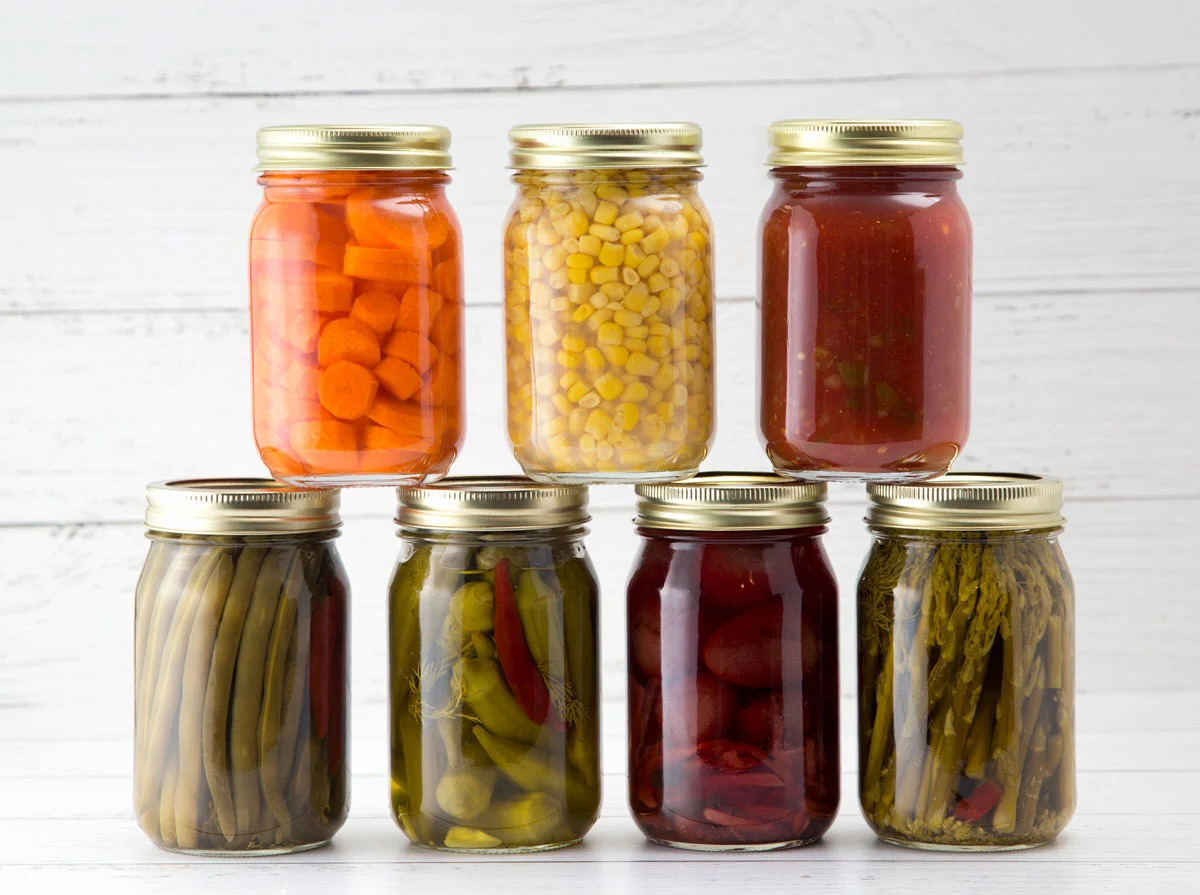
Food preservation has always been crucial for human survival, allowing us to enjoy a variety of foods year-round. From ancient practices to modern innovations, the methods used to keep food fresh are as diverse as they are fascinating. Have you ever wondered how people managed to preserve food before refrigerators and freezers? Bizarre food preservation techniques like pickling, smoking, and fermenting have been around for centuries, while newer methods like high-pressure processing and vacuum sealing continue to evolve. These techniques not only extend the shelf life of food but also enhance flavors and textures, making them an essential part of culinary traditions worldwide.
Key Takeaways:
- Pickling and fermentation are ancient yet popular methods for preserving food and creating unique flavors. They use vinegar, brine, and beneficial bacteria to keep food safe and tasty.
- Modern innovations like freezing and high-pressure processing have made food preservation more efficient and effective. These methods slow down spoilage and extend the shelf life of food without compromising quality.
Pickling and Fermentation: Ancient Techniques with Modern Appeal
Pickling and fermentation have been around for centuries, preserving food and creating unique flavors. These methods are still popular today, thanks to their simplicity and effectiveness.
-
Pickling Preserves Food Through Fermentation
Pickling immerses food in vinegar or brine, creating an acidic environment that prevents spoilage. This method has been used for centuries for cucumbers, beets, and cabbage. -
Fermentation Transforms Food Through Beneficial Bacteria
Fermentation uses beneficial bacteria or yeasts to preserve food. Foods like yogurt, sauerkraut, and kimchi undergo fermentation, enhancing flavors and extending shelf life. -
Pickling Preserved Foods with a Sharp, Pungent Flavor
Pickling foods like cucumbers, cauliflower, and cabbage in a salt brine preserved them and gave them a sharp, pungent flavor. This method has been used for centuries to preserve vegetables and fruits.
Smoking and Drying: Time-Tested Methods
Smoking and drying are traditional methods that not only preserve food but also add unique flavors. These techniques have been used for generations to keep food safe and tasty.
-
Smoking Adds Flavor While Preserving
Smoking exposes food to smoke from burning wood, imparting a smoky flavor and preserving it by dehydrating and inhibiting microbial growth. This method is especially popular for meats. -
Drying Extends Shelf Life
Drying removes water content, inhibiting the growth of bacteria, yeast, and molds. This technique is commonly used for fruits, vegetables, and herbs. -
Drying Was One of the First Methods for Preserving Food
Ancient Egyptians used salt and the hot sun to remove moisture from food, making it safe to eat later. Native Americans ate pemmican, a mixture of dried meat, dried fruits, and fat. -
Solar Food Drying Is a Popular Method
Solar food drying uses the sun’s heat to dry food, preserving natural flavors and nutrients. This method is particularly useful for drying fruits and vegetables.
Freezing and High-Pressure Processing: Modern Innovations
Modern technology has introduced new methods like freezing and high-pressure processing, making food preservation more efficient and effective.
-
Freezing Slows Down Spoilage
Freezing food at temperatures below 0 degrees Celsius halts the growth of bacteria and enzymes, preserving quality and nutritional value for extended periods. -
High-Pressure Processing Preserves Food Without Heat
High-pressure processing (HPP) extends the shelf life of food without heat or chemical additives. It involves subjecting food to high pressures, eliminating harmful bacteria while retaining nutrients. -
Freezing Is a Fast Way to Preserve Tomatoes
Freezing tomatoes allows you to enjoy them throughout the year without worrying about spoilage. This method is particularly useful for preserving tomatoes in season.
Canning and Vacuum Sealing: Sealing Freshness
Canning and vacuum sealing are effective methods for preserving food by sealing it in airtight containers, preventing spoilage and extending shelf life.
-
Canning Is a Method of Preserving Food Under Pressure
Canning involves sealing food in airtight containers and heating them to destroy microorganisms. This process extends the shelf life of fruits, vegetables, and meats. -
Vacuum Sealing Eliminates Oxygen for Preservation
Vacuum sealing removes air from packaging, preventing oxidation. This method is commonly used for preserving perishable items like meat and vegetables. -
Mason Jars Were Invented for Canning
Mason jars, capable of being heated to high temperatures without breaking, became popular for home canning due to their durability and ease of use. -
Early Canned Foods Were Mostly Safe
Canned goods found on a steamer boat that sunk 100 years ago were free of bacteria. They smelled and looked horrible, but they were safe to eat.
Sugar and Salt: Natural Preservatives
Sugar and salt have been used for centuries to preserve food by creating inhospitable environments for bacteria, molds, and yeast.
-
Sugar Acts as a Preservative
Sugar reduces water activity and increases osmotic pressure, creating an inhospitable environment for bacteria, molds, and yeast. This method is effective for preserving fruits. -
Ancient Methods of Food Preservation
Ancient methods like drying, curing, fermenting, pickling, and smoking have been used by various cultures for centuries to preserve food and enhance its flavor. -
Cold Cellars and Root Cellars Were Used to Store Vegetables
Cold cellars or root cellars under houses stored apples, onions, carrots, squash, and other vegetables over the winter, keeping them cool and fresh. -
Larders Were Used to Store Butter, Cheese, and Meat
Larders, often built on the north side of houses next to kitchens, kept foods cool on stone shelves. This was the place to store butter, cheese, and meat.
Technological Advancements in Food Preservation
Modern advancements have introduced new techniques, making food preservation safer and more efficient.
-
Modern Advancements in Food Preservation
High-pressure processing, irradiation, and modified atmosphere packaging extend the shelf life of food while maintaining quality. -
Technological Advancements Have Spawned New Preservation Methods
Innovations like canning allowed for the preservation of foods not in season, significantly impacting food availability and culinary diversity. -
The Master Food Preserver Program Teaches Advanced Techniques
The Master Food Preserver Program teaches participants the most effective and up-to-date techniques for safe food-handling and proper storage.
Unique and Bizarre Preservation Techniques
Some food preservation techniques are truly bizarre, showcasing human ingenuity in keeping food safe and tasty.
-
Covering Crops with Straw Preserved Them
Covering crops like carrots and turnips with straw allowed them to be left in the garden for months, preserving them for later use. -
Ice Was Used to Keep Food Cold Before Refrigeration
Workers cut huge blocks of ice from frozen lakes in winter, storing them in buildings insulated with sawdust. These ice chunks kept food cold in summer. -
Nicolas Appert Invented Canning in 1810
Nicolas Appert, a French chef, discovered that heating food could make it safe. He sealed foods in glass jars with a cork and wax, wrapped them in canvas, and boiled them. -
Brian Donkin Tried Canning in Tin Cans in 1812
Brian Donkin tried canning food in tin cans, but limited technology made them expensive. The can opener hadn’t been invented yet, so tin cans didn’t catch on until later.
Fermented Foods: A Resurgence in Popularity
Fermented foods are making a comeback, offering both preservation and health benefits.
-
Fermented Foods Are Resurging in Popularity
Fermented foods like lactofermented vegetables and kimchi are experiencing a resurgence. These foods preserve well and offer health benefits due to beneficial bacteria. -
Food Preservation Styles Are Linked to Geography and Climate
Preservation styles are closely linked with geography and climate. For example, salting is preferred where salt is cheap, while drying works well in hot, dry places. -
Dried Goods Have a Long Shelf Life
Many dry goods, such as oatmeal and flour, have a long shelf life. These items can be stored for months or even years without spoiling. -
Dried Food Takes Up Less Space Than Canned Food
Dried food takes up considerably less space than canned food, making it easier to manage storage space in the home. -
Salsa Recipes Can Be Preserved Through Freezing
Freezing salsa allows you to enjoy it throughout the year without worrying about spoilage. This method is particularly useful for preserving salsas made with fresh ingredients.
Conclusion: The Evolution of Food Preservation
Food preservation techniques have evolved significantly over time, from ancient methods to modern innovations. Understanding these techniques enhances our appreciation for culinary arts and ensures we can enjoy a diverse array of foods safely and efficiently.
-
Food Preservation Techniques Have Evolved Over Time
From ancient methods like pickling and smoking to modern techniques like high-pressure processing and vacuum sealing, food preservation has become more sophisticated and efficient. -
Drying Is a Fast, Economical, and Safe Way to Preserve Food
Drying is a fast, economical, and safe way to preserve food. Dried fruits and vegetables found a place in the pantry, alongside jars of French-cut green beans and corn. -
Freezing Is an Effective Method of Food Preservation
Freezing slows down the growth of bacteria and other microorganisms, preserving the quality and freshness of food for an extended period. -
Pasteurization is a Common Method for Preserving Liquids
Developed by Louis Pasteur, pasteurization involves heat-treating liquids like milk and juice to kill harmful bacteria and extend their shelf life. -
Technological Advancements Have Spawned New Preservation Methods
Innovations like canning allowed for the preservation of foods not in season, significantly impacting food availability and culinary diversity.
The Ever-Evolving Art of Food Preservation
Food preservation has come a long way from ancient methods like pickling and smoking to modern techniques like high-pressure processing and vacuum sealing. These methods have not only extended the shelf life of our favorite foods but also enhanced their flavors and nutritional value. Techniques like fermentation and drying have stood the test of time, while innovations like pasteurization and freezing have revolutionized how we store food. Each method, whether ancient or modern, plays a crucial role in ensuring we can enjoy a diverse array of foods safely and efficiently. Understanding these techniques helps us appreciate the culinary arts and ensures we can make informed choices about food storage. From sugar preservation to solar drying, the art of preserving food continues to evolve, adapting to our needs and technological advancements.
Frequently Asked Questions
Was this page helpful?
Our commitment to delivering trustworthy and engaging content is at the heart of what we do. Each fact on our site is contributed by real users like you, bringing a wealth of diverse insights and information. To ensure the highest standards of accuracy and reliability, our dedicated editors meticulously review each submission. This process guarantees that the facts we share are not only fascinating but also credible. Trust in our commitment to quality and authenticity as you explore and learn with us.


